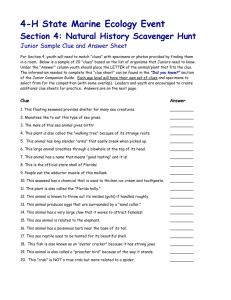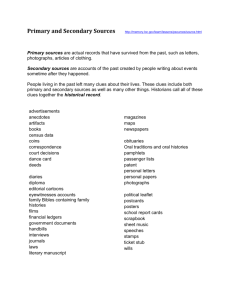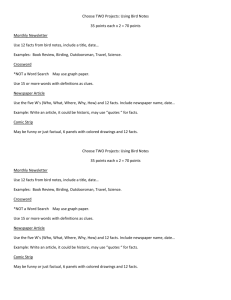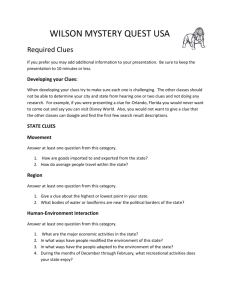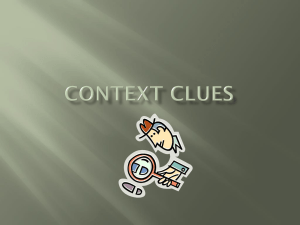4-H Marine Ecology Event
advertisement
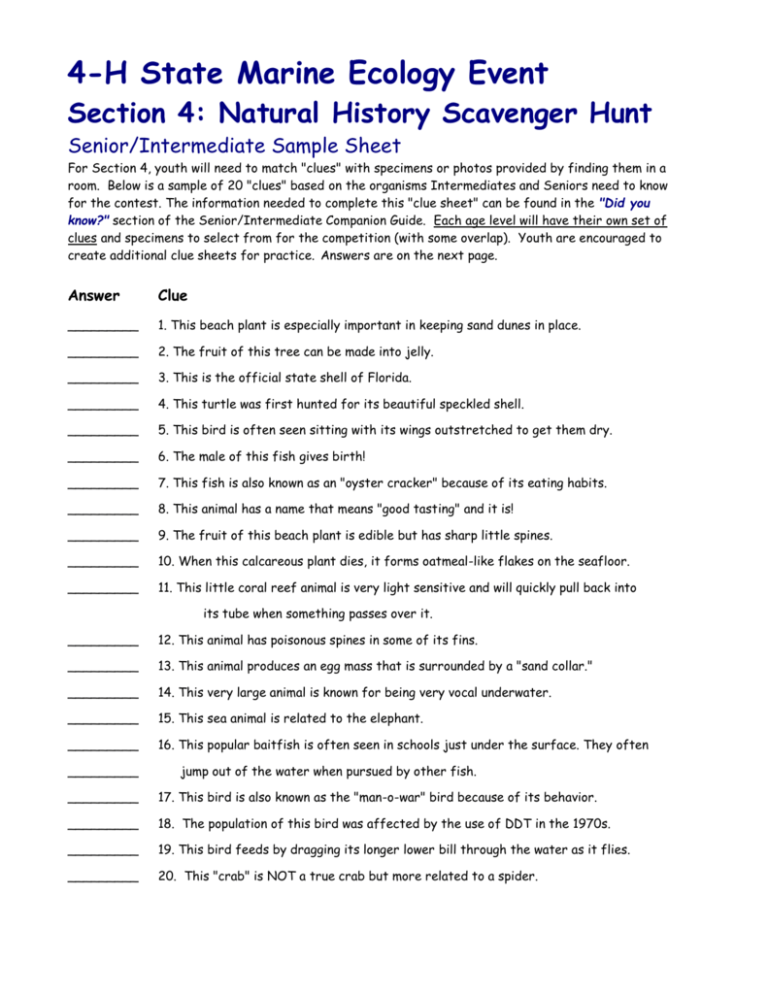
4-H State Marine Ecology Event Section 4: Natural History Scavenger Hunt Senior/Intermediate Sample Sheet For Section 4, youth will need to match "clues" with specimens or photos provided by finding them in a room. Below is a sample of 20 "clues" based on the organisms Intermediates and Seniors need to know for the contest. The information needed to complete this "clue sheet" can be found in the "Did you know?" section of the Senior/Intermediate Companion Guide. Each age level will have their own set of clues and specimens to select from for the competition (with some overlap). Youth are encouraged to create additional clue sheets for practice. Answers are on the next page. Answer Clue _________ 1. This beach plant is especially important in keeping sand dunes in place. _________ 2. The fruit of this tree can be made into jelly. _________ 3. This is the official state shell of Florida. _________ 4. This turtle was first hunted for its beautiful speckled shell. _________ 5. This bird is often seen sitting with its wings outstretched to get them dry. _________ 6. The male of this fish gives birth! _________ 7. This fish is also known as an "oyster cracker" because of its eating habits. _________ 8. This animal has a name that means "good tasting" and it is! _________ 9. The fruit of this beach plant is edible but has sharp little spines. _________ 10. When this calcareous plant dies, it forms oatmeal-like flakes on the seafloor. _________ 11. This little coral reef animal is very light sensitive and will quickly pull back into its tube when something passes over it. _________ 12. This animal has poisonous spines in some of its fins. _________ 13. This animal produces an egg mass that is surrounded by a "sand collar." _________ 14. This very large animal is known for being very vocal underwater. _________ 15. This sea animal is related to the elephant. _________ 16. This popular baitfish is often seen in schools just under the surface. They often _________ jump out of the water when pursued by other fish. _________ 17. This bird is also known as the "man-o-war" bird because of its behavior. _________ 18. The population of this bird was affected by the use of DDT in the 1970s. _________ 19. This bird feeds by dragging its longer lower bill through the water as it flies. _________ 20. This "crab" is NOT a true crab but more related to a spider. Answers to Section 4: Senior/Intermediate Sample Sheet Note: Clues and answers will depend on what specimen are available or on display. Some clues may apply to more than one animal or plant. Youth should be able to match clues to pictures and actual specimens, not just to a name alone. The name of the organism (with the specimen) may or may not be given in the competition. 1. sea oats 2. sea grape 3. Florida horse conch 4. hawksbill turtle 5. anhinga OR cormorant 6. seahorse or pipefish 7. toadfish 8. blue crab 9. prickly pear cactus 10. disc algae 11. Christmas tree worm 12. gafftopsail catfish OR hardhead catfish 13. moon snail 14. humpback whale 15. manatee 16. mullet 17. frigate bird 18. bald eagle 19. black skimmer 20. horseshoe crab
